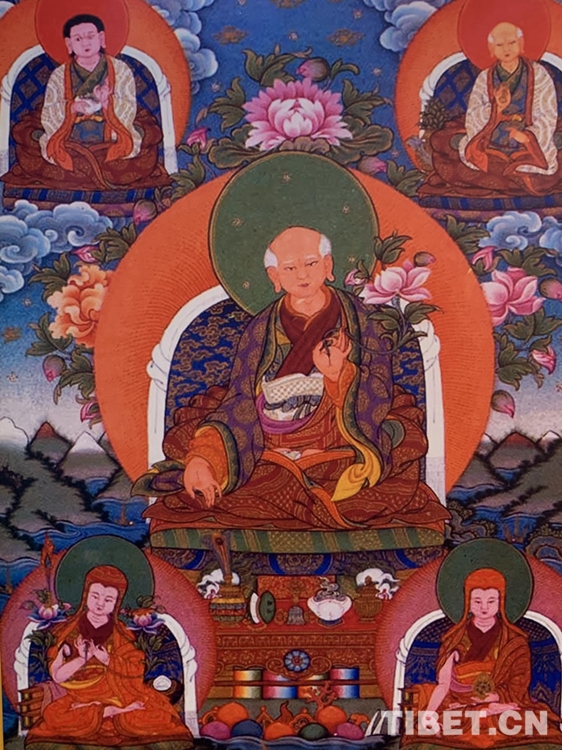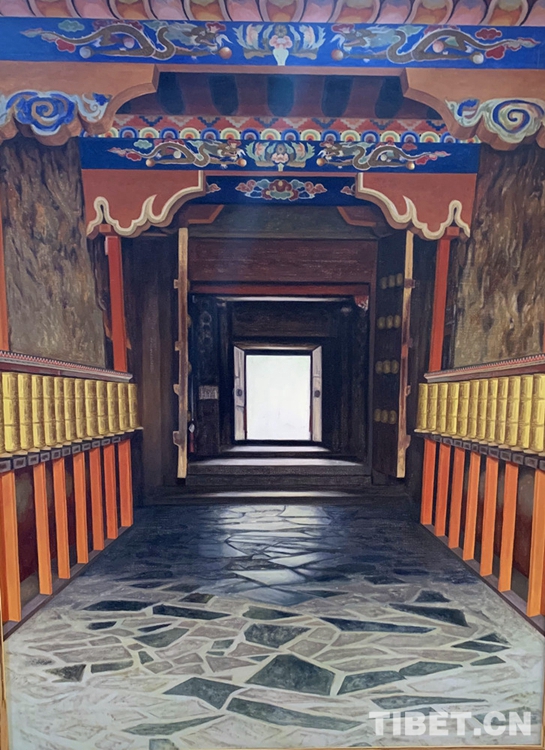The Liangzhou Talk between Godan and Sakya Pandita
In China's 5,000-year history, different ethnic groups have been interdependent, coexisted, and worked together to create a splendid Chinese civilization. The Tibetan people, as one of the 56 ethnic groups, has joined the creation of Chinese civilization.

The Five Forefathers of Sakya sect of Tibetan Buddhism.
In the year 1247AD, as a local Tibetan religious leader, Sakya Pandita went to today's Wuwei, Gansu province as a representative of Tibet to meet with Prince Godan of Mongolia, representing the Mongolian Khan court. The meeting is called the "Liangzhou Talk" in history, after which the "Sakya Pandita's Letters to the Tubo People" was issued, which thus officially incorporated Tibet into Chinese territory and made it an administrative region under the central government of the Yuan Dynasty.
In August 1246, when Sakya Pandita and his entourage arrived in Liangzhou, Prince Godan was in the capital Karakorum attending the ceremony to appoint the successor to Guyuk Khan. While they waited, Sakya Pandita contacted different parties to gain an in-depth understanding of the situation in Mongolia and related areas. Sakya Pandita saw that the religious people of Liangzhou all lived in harmony, and he decided to use this opportunity to promote the Buddha dharma.
In 1247, Prince Godan met with Sakya Pandita for the first time. The two sides talked harmoniously and respected each other. Prince Godan consulted Sakya Pandita about Tibet's political and economic development, folk customs, and asked to be taught Buddha dharma. Prince Godan firmly believed Sakya Pandita to be a wise and knowledgeable person.
Before the talk, Prince Godan caught a disease and was bedridden. Sakya Pandita came to Prince Godan's sleeping quarters on his own and prayed for the prince that his disease would be cured.
In August 1247, Prince Godan, the representative of the Mongolian Khan, and Sakya Pandita, the representative of Tibet, held a talk on Tibet's future in the Shartrul Paide Monastery, Liangzhou. Both sides reached a consensus after a series of discussions. The Liangzhou Talk was a complete success. Wars between the Mongols and people in Tibet was avoided, and the two ethic groups maintained in peace and friendly exchange thus after.
After the talk, Sakya Pandita wrote letters to monastic leaders, relatives, and friends all over Tibet, which was the "Sakya Pandita's Letters to the Tubo People". The letter stated that the Mongolian royal family respected Tibetan religious beliefs and authorized the Sakya leaders to manage Tibetan political and religious affairs. After the Tibetan religious followers and laymen read the letters, they were overjoyed.
In the winter of 1251, Sakya Pandita summoned the 17-year-oldPhagpa and the later inherited Sakya Pandita's religious authority and became the fifth leader of Sakya Sect. After, Sakya Pandita passed away at the Shartrul Paide Monastery at the age of 70.
The historical event of the Liangzhou Talk is a landmark moment in the history of the development of Tibet-Central Government relations. The Mongolian and Tibetan people have made significant contributions to the peaceful reunification of the motherland and the development of ethnic unity.

A corridor of Sakya Monastery in Tibet.
Editor: Tommy Tan.
